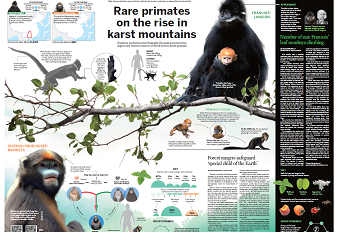Threads of the past run into the future
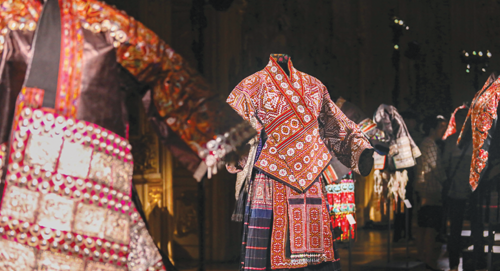
Miao embroidery fashion is displayed in the 2024 spring/summer collection of Milan Fashion Week on Sept 24, 2023. CHINA DAILY
In Milan, a town in which the chic and the modern are seemingly inseparable, this was the aging star that simply stole the show: clothing dating back thousands of years gracing the catwalks and awing audiences from around the world.
That clothing, on display in the spring/summer collection of Milan Fashion Week in September, was emblazoned with intricate, ornate square patterns.
The designs were not simply inspired from the latest trends but also drew on the traditions of the Miao, who migrated across the vast expanses of ancient China, with a mission to safeguard the Miao king's seal. To preserve their identity and connection a rendering of the seal was embroidered onto their garments.
That seal has endured through centuries to find itself in the fashion spotlight, as far away as Milan, Italy.
"Miao embroidery is known as 'wearable history', and the stories of the Miao behind these designs down the centuries truly resonate with me," says Zhao Huizhou, a designer who led the Miao-inspired show in Milan.
The Miao ethnic seal features four vibrant squares, meticulously embroidered onto the chest, back and shoulders of those wearing the traditional attire. Miao communities inhabit areas across China, including in Guizhou, Yunnan, Sichuan and Guangdong provinces.
In Milan, designs were unveiled that can be traced to the distinctive attire of Miao groups in Guizhou.
The four-square seal is just one facet of Miao embroidery's narrative tapestry. Across intricate patterns, one can discern traces of the Miao migratory odyssey — through winding roads, meandering rivers and rugged terrain — all etched into the rich fabric reminiscent of the challenges their ancestors faced.
"Through these patterns Miao people record myths and epics of migration, enabling memories to be passed on down the generations," says Jiao Hongxiu, a Miao who is a local embroiderer in Kaili, Guizhou.
Liu Rui, a local official dedicated to the preservation and promotion of Miao embroidery and its culture, says embroidery serves as "a unique cultural language" for the Miao people.
"It's not merely clothing; it's a living history, a cartographic narrative and a badge of identity."
The significance of Miao embroidery includes patterns and stitching techniques in which Miao people can discern between their various communities, Liu says.
For example, a dragon motif symbolizes the Miao connection to Han Chinese culture but with subtle variations, he says. Miao groups living in Shibing county used a dragon design resembling a centipede whereas along the Bala River it took on the likeness of a silkworm.
Over thousands of years the Miao people have also traversed vast territories, from China to Southeast Asia, and later to Europe and the Americas, where they are referred to as Hmong in some areas. Official figures put the global Miao ethnic population at more than 14 million, 11 million of them in China and the rest dispersed across over 10 countries spanning four continents. Embodied in their ethnic attire, Miao culture continues in the diaspora, providing a tangible link to their ancestral heritage.
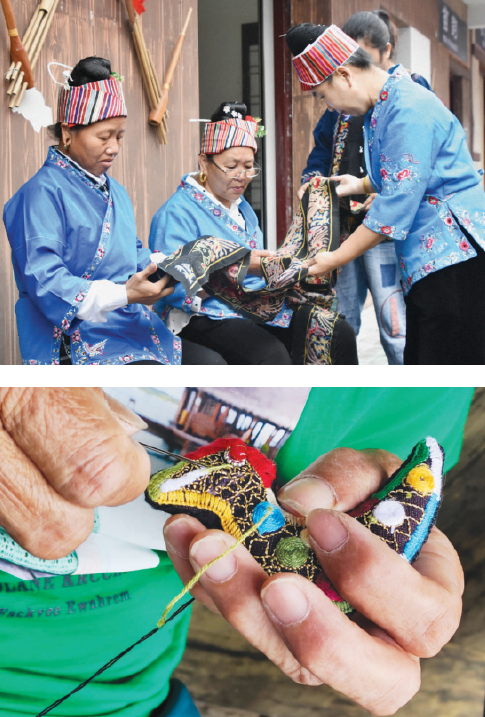
Above from top: Miao embroiderers inspect decorative work at Xiulitao market in Kaili, Guizhou province, on Sept 15, 2023; Miao embroiderers practice skills at a training base in Kaili, Guizhou province on July 5, 2023. CHINA DAILY
Fashionable tradition
In 2021, when President Xi Jinping visited Huawu Village in Guizhou, one thing that caught his attention was exquisite handmade Miao embroidery on garments and ornaments, and villagers explained the crafting process to him.
"What's traditional is also fashionable," Xi said, calling for Miao embroidery to be promoted, thus helping with rural vitalization.
In the same year, Jiao Hongxiu, the sole university graduate in the village of Luomian in Guizhou, returned home brimming with ideas on how to help Miao womenfolk use their embroidery skills to generate income.
Liu Rui, a local official, also directed his efforts to help fuel the cultural and creative industry related to Miao embroidery, striving to attract investment in the sector.
Before switching to market-oriented Miao embroidery production, the women in the village, mostly housewives, lacked formal employment opportunities. Embroidery, often viewed as a time-consuming hobby, was frequently discouraged by their husbands, Liu and Jiao say.
For Jiao, a member of the Miao community, embroidery is an inherent skill among women in the community, with needles and thread an integral part of their world.
"I grew up observing my mother and grandmother embroider tirelessly. While studying aesthetic design at university, designing Miao embroidery was akin to replacing the pen and paper with needle and thread."
With Jiao's help, Miao women in her village now channel their skills into crafting delicate products such as handbags and shoes, which can help add 3,000 yuan to 4,000 yuan ($415 to $553) to each of their monthly incomes.
Meixiang, a secluded Miao village in which more than 130 households have tilled the land for generations, once struggled with poverty. Before poverty alleviation initiatives, average individual income was about 1,000 yuan a year.
In 2015, with the support of the Kaili government and the Soong Ching Ling Foundation, an embroidery rural cooperative was established in Meixiang, helping local women to acquire the skills to promote and innovate their embroidery. At Xiulitao cultural market in Kaili alone the women can get free access to embroidery booths.
Since the project began in 2015, the total value of orders the cooperative has attracted is 1 million yuan. For Meixiang, poverty is now but a memory, with average individual income now exceeding 10,000 yuan.
Other than improved incomes, the local women also enjoy better status in their families and communities, with their husbands encouraging and supporting their ethnic embroidery work, Liu says.
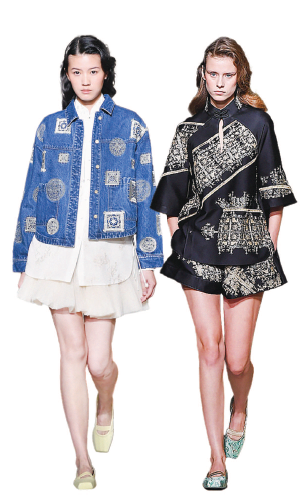
Models wear clothes with ethnic Miao embroidery seal patterns in the 2024 spring/summer collection of Milan Fashion Week on Sept 24, 2023. CHINA DAILY
Fresh designs
Jiao Hongxiu, who helps promote Miao embroidery through innovation, says it is crucial to tailor Miao embroidery to meet market demand. Cultivating local designers to redesign Miao embroidery plays a pivotal role in empowering rural women in her hometown, she says.
"Certain embroidery techniques, rooted in tradition, often clash with modern fabrics and aesthetic sensibilities. The intricate, densely embroidered patterns that Miao people cherish may not align with the minimalist preferences of today's consumers. This poses a challenge for untrained embroiderers, and they need to adapt their techniques and aesthetic tastes."
Jiao is keen to train local elderly embroiderers to redesign their work as wellsprings of creativity. Through training the women can unleash their creativity and produce innovative designs, she says. "Every woman embroiderer is a great designer. No matter if they're 80 or 90 years old, their designs always possess the freshness and vitality of an 18-year-old, exuding the vibrancy of youth."
An elderly embroiderer's creation resembling a mythical creature is amazing, Jiao says.
Patterns, materials and embroidery techniques need to complement each other, Liu says, and the suitability and innovation in materials need to be considered in line with modern trends, ensuring that the textures harmonize effectively with chosen patterns.
He once encountered a designer who faced difficulties incorporating her beloved fish-pattern Miao embroidery into a high-end dress, he says.
"Homespun cloth, while traditional, may not meet the standards required for high-end designs. While counted thread embroidery demands a precise understanding of the fabric's warp and weft, silk, being delicate, poses a challenge for discerning these elements with the naked eye."
During Milan Fashion Week, the Chinese singer A Duo, dressed in redesigned four-seal Miao-style clothing, performed an ethnic song for the runway show in an immersive Miao experience.
"What constitutes culture?" the fashion designer Zhao Huizhou asked during the show. "I believe it encompasses clothing, food, transportation and all aspects of daily life."
The transformative potential of contemporary design language in reviving Miao skirts can enable people to directly experience the allure of these cultures, she said.
Underscoring the power of redesigning intangible cultural heritage, Zhao says: "We need to understand the past, and we also need to think about the present and envision the future. As designers, we should consider how to use fashion as a language to reinterpret Miao culture in the contemporary context."
Zhao Yandi and Kuang Hanying contributed to this story.
京ICP备13028878号-8







 Overview
Overview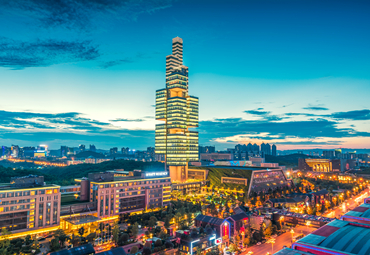 Guiyang
Guiyang Guian New Area
Guian New Area Liupanshui
Liupanshui Anshun
Anshun Qianxinan
Qianxinan Qiandongnan
Qiandongnan Qiannan
Qiannan Zunyi
Zunyi Tongren
Tongren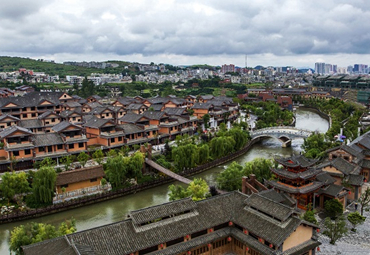 Bijie
Bijie Guizhou fosters cross-cultural bonds in Europe
Guizhou fosters cross-cultural bonds in Europe 18th Guizhou Tourism Industry Development Conference
18th Guizhou Tourism Industry Development Conference 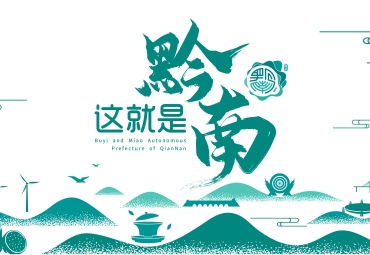 Discover natural beauty in Qiannan, Guizhou
Discover natural beauty in Qiannan, Guizhou 
